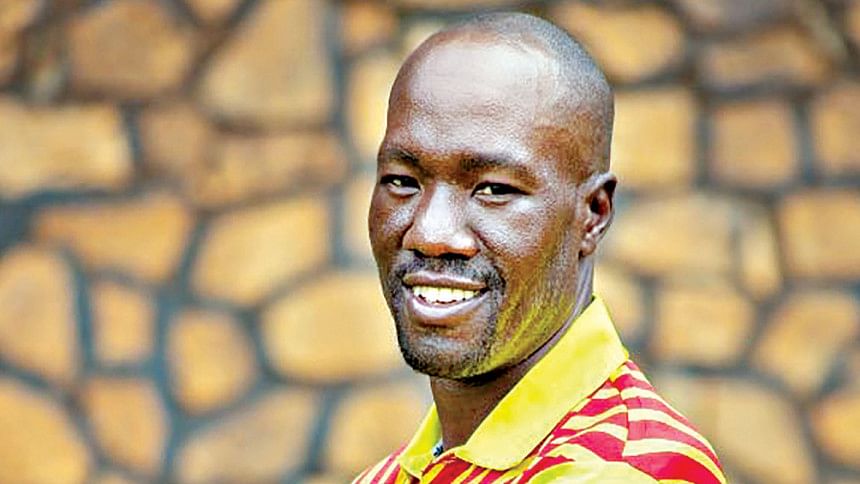From fringes to big dance

It took 28 years, but Frank Nsubaga has finally made it to the big stage.
Nsubaga, an all-rounder of Uganda's T20 World Cup team, has been around for a while. He first ventured into international cricket in 1997 for a team called East and Central Africa, a side that represented Malawi, Tanzania, Uganda, and Zambia.
His first tournament in international cricket was the 1997 ICC Trophy in Kuala Lumpur, the tournament that launched Bangladesh's ascendency to full membership.
Nsubaga, who was just 16 at the time, played two of the four group-stage matches, all of which ended in defeat for the African side.
That was his first heartbreak in international cricket, the first of many failures in pursuit of a chance to compete in the World Cup.
That team has long disappeared from the face of cricket, but Nsubaga is still here. He resumed his international career for Uganda in 2004 and has been a part of the side for two decades now.
Nsubaga was seemingly destined to join the rank of cricketers who toiled away at the backwaters of cricket for decades, gave their life to the game but never got their moment in the sun.
But then a miracle happened. Well, calling it a miracle may be a stretch, but it certainly was an upset.
Uganda stunned Zimbabwe in the Africa qualifiers, a result no one saw coming, and claimed a spot in the ICC T20 World Cup 2024.
Nsubaga and the spirited Uganda side will compete in their first major ICC event in the forthcoming T20 World Cup, a tournament where for the first time nine associate nations will be on display.
ICC's decision to make the T20 World Cup a 20-team affair opened up more slots for teams like Uganda and players like Nsubaga to experience the high of competing in a World Cup.
Papua New Guinea captain Assad Vala is another such example. A top-order batter, who has been around since 2005, had led his team to their maiden T20 World Cup in 2021.
But in that edition, they were slotted in the first round, an unofficial qualifying phase where associates competed against lower-ranked full members and only the top two teams of each group made it to the second round, where the big boys had automatically qualified.
The ICC has done away with that tournament structure, as in this edition the associates and full members will begin their campaigns from the first round, meaning Vala and his team will finally get to compete in the actual World Cup.
The stories of Nsubaga and Vala are of homegrown players who have worked for decades for an opportunity to represent their country in a World Cup.
But in the world of associate cricket, almost all teams have players from other countries and in many teams, they even outnumber the homegrown cricketers.
Alpesh Ramjani, Nsubaga's teammate, is one such player. Born in Mumbai, Ramjani played for age-level teams in Mumbai but had given up on his cricket dream, taken up a job, and was playing corporate cricket on the side.
But after losing his job during the Covid-19 pandemic, he moved to Uganda for employment and tried out for the national team, hoping to restart his cricketing journey in a different country.
In less than three years, from just another player in the Mumbai circuit, Ramjani has now become a star all-rounder at the associate level, even making it to ICC's T20 Team of the Year for 2023.
Then there are players like ex-New Zealand international Corey Anderson and former South Africa cricketer David Wiese, who now play for USA and Namibia respectively.
Both Anderson and Wiese are past their prime but with a move to the associate level they have extended their international careers and have an opportunity to make a difference in sides that are in pursuit of joining the league of the full members.
From a neutral fan's perspective, the inclusion of nine associates in a World Cup may seem like an overkill, as it increases the odds of seeing dead rubbers.
The associates can spring up surprises in the tournament, as they have done in past editions, but that doesn't change the fact that they are here more to make up the numbers than to compete for the trophy.
But before writing these teams off as unnecessary inclusions, spare a thought for the individuals making up the sides, some of whom have spent decades for this opportunity while others have moved to a different country for a second chance, and applaud from the sidelines as they fulfil their World Cup dreams.

 For all latest news, follow The Daily Star's Google News channel.
For all latest news, follow The Daily Star's Google News channel. 



Comments